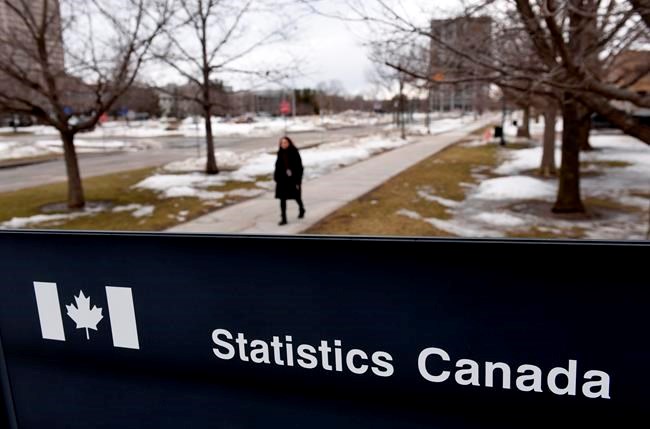OTTAWA — The 91Ô´´ economy continues to beat recession fears, posting modest growth in the fourth quarter even as high interest rates weighed on consumers and businesses.
Statistics Canada reported Thursday real gross domestic product increased at an annualized rate of one per cent in the last three months of the year, exceeding economists' expectations and the Bank of Canada's forecast for the quarter.Â
The increase follows a decline of 0.5 per cent in the third quarter.
Real GDP per capita continued to fall in the fourth quarter, however, suggesting the economy is not faring as well as it may seem at first glance.
"We still are living in a world of high interest rates, where 91Ô´´s and 91Ô´´ businesses are constrained. And as a result, we're essentially in this slow growth time period right now for as long as interest rates remain high," said James Orlando, TD's director of economics.
Growth in the fourth quarter was driven by a rise in exports, while housing and business investment both fell.
Statistics Canada said that outside of 2020, economic growth last year was the slowest since 2016.
In December, real GDP was flat as goods-producing industries contracted and Quebec's public sector workers' strike weighed on growth.
BMO chief economist Douglas Porter said the economy is "grinding forward" with help from strong U.S. spending trends, which have boosted 91Ô´´ exports.
The U.S. economy grew at a robust 3.2 per cent annual pace from October through December, propelled by healthy consumer spending, the U.S. Commerce Department reported Wednesday.
"There's no debate that growth is nevertheless anemic, especially when cast in per capita terms," Porter said in a client note, adding that real GDP per capita is down more than two per cent from a year ago.
High interest rates have put a damper on 91Ô´´s’ finances as the Bank of Canada holds its key interest rate at five per cent, the highest it’s been since 2001.
Households continue to renew their mortgages at higher rates, which is causing a pullback in consumer spending and a slowdown in sales for businesses.
The report Thursday said while consumer spending was up for the quarter, it continued to decline on a per capita basis as the country experiences strong population growth.
Statistics Canada's preliminary estimate for January suggested real GDP grew by 0.4 per cent in the first month of 2024.
Orlando said he's taking that estimate with a grain of salt given the early figures will be revised.
Additionally, internal TD data suggests consumers are pulling back on spending, he said.
The Bank of Canada raised borrowing costs with the intention of slowing down an overheated economy that it blamed for the historic run-up in prices.
As the economy now shifts into a state of "excess supply" — where demand lags the supply of goods and services — Orlando said inflation should continue falling.
"I think everything is in place for inflation to continue to decelerate," he said.
The Bank of Canada has signalled that its next move is most likely a rate cut as inflation eases and higher rates dampen economic growth.
Canada’s annual inflation rate ticked down to 2.9 per cent in January amid a broad-based slowdown in price growth.
Most economists expect the central bank to start lowering its key rate around the middle of the year, but a stronger-than-expected economy may reduce the urgency for the central bank to act soon.
"This changes little for the Bank of Canada, as conditions don't appear to be worsening so there's no urgency to cut rates," Porter said. "With growth still well below potential, disinflationary pressure will continue, but it will require ongoing patience."
The Bank of Canada is set to announce its next interest rate decision on March 6.
This report by The 91Ô´´ Press was first published Feb. 29, 2024.
— With files from The Associated Press.
Nojoud Al Mallees, The 91Ô´´ Press



